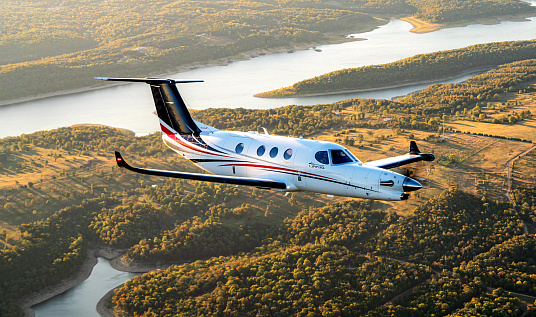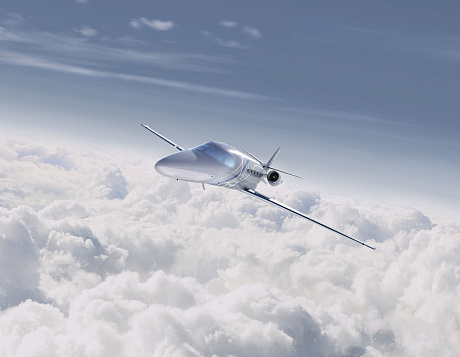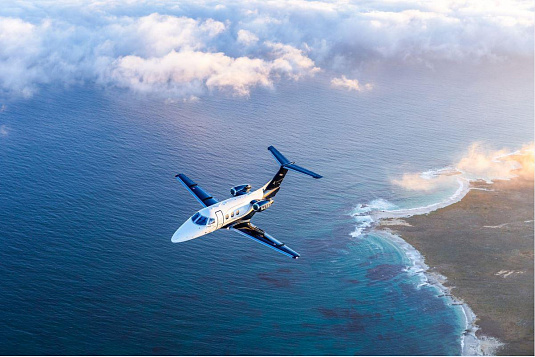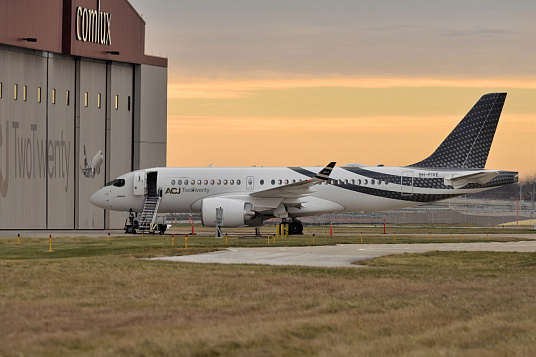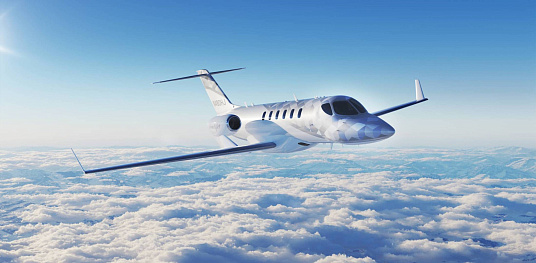22.07.2014
Новости
The Russian aircraft leasing sector grew in 2013 despite the overall stagnation on the country’s leasing market. The share of aircraft taken by Russian carriers from Russian lessors under operational leasing schemes is growing gradually. Operational leasing deals involve only Western airliner types: extending the practise to cover new Russian models, such as the Sukhoi SSJ 100, remains an impossible task due to the current blanks in the Russian legislation and the absence of mechanisms for estimating such aircraft’s residual value.
The aircraft leasing segment helped the entire leasing industry finish 2013 with positive results, but the growth rate is expected to drop this year. “The leasing market will not grow by more than 5% in 2014 even according to the most optimistic scenario,” Pavel Samiyev, deputy CEO of the rating agency Expert RA, said late last year. “In the first nine months of 2013, the aircraft leasing segment helped the market in general demonstrate some modest growth. Without that segment, we would have recorded a drop of 15.5%; in 2014 the aircraft leasing segment may grow even less.” Even despite this growth, foreign lessors continue to dominate the Russian commercial aviation market.
“We do not expect any radical changes within the aircraft leasing segment this year,” Pavel Piskun, director for international business development at Sberbank Leasing, said in an interview with Russia & CIS Observer. “Work will mostly be focused on the contracts announced a year or two ago, including deliveries of Boeing 737s and 777s to Aeroflot, of Airbus A321s and Boeing 737s to UTair Aviation, and several other deals. Speaking of the 2013 results, the Russian segment of the aircraft leasing market demonstrated substantial growth but the overall situation did not change that much: foreign lessors continue to dominate the Russian market.”
As before, the major players on the Russian aircraft leasing market are structures affiliated with state-owned Russian banks, including VTB Leasing, Sberbank Leasing, and VEB Leasing. All of these work predominantly with Western-made airliners, preferring to lease to the top five Russian carriers as their most reliable partners. Russian airlines have been ordering sizeable batches of Boeing and Airbus airliners, prompting the market to grow, since carriers turn to lessors either prior to or after the signing of contracts. VEB Leasing last year landed a financial leasing contract from Aeroflot for six Boeing 777s. The first airliner was delivered in late January 2014. These are aircraft from the carrier’s two 2011 orders for a total of 16 of the type. VEB Leasing also partners with UTair on its order for 20 Airbus А321s, which was placed at the Farnborough Airshow in 2012.
“UTair transferred its Airbus contract to us,” VEB Leasing CEO Vyacheslav Solovyev said earlier. “We are purchasing the aircraft and making pre-delivery payments. At least the first several deliveries are covered by guarantees of the European agencies Hermes, COFACE and ADCG, and Citibank is involved in the financing of the contract. We are delivering the airliners to UTair under a financial leasing scheme, meaning that they will become the airline’s property after the lease period is over.”
For its other major contract, the one involving Boeing 737-800/900 airliners, UTair approached VTB Leasing, which had previously helped the airline acquire pre-owned Boeing 767s and Boeing 737-500s. However, UTair has ended up getting its new Boeing 737-800s under a financial leasing agreement with PK AirFinance, a subsidiary of GECAS. VTB Leasing, for its part, purchased a contract for the delivery of 50 Boeing 737NGs from Avia Capital Services, a subsidiary of Rostec Corporation, in mid-2013.
Sberbank Leasing last year was contracted to deliver 12 new Boeing 737-800s to Transaero Airlines in 2015-17. Unlike the aforementioned contracts, these aircraft will be operated under an operational leasing scheme. Russian lessors previously avoided this type of product. “There used to be virtually no operational leasing agreements, but now the three key players have grown used to this instrument and know what to do with the asset after it returns from the operator,” says Roman Pakhomov, head of Avia Capital Services.
The top three Russian lessors mostly work with mainline aircraft seating from 100 passengers. It was only recently that leasing companies turned to turboprops seating 50 to 70 passengers. In Russia in the past two years, State Transport Leasing Company has been active on the market of small regional airliners seating fewer than 50 persons. The company has delivered around two dozen Let L-410 and Cessna 208B Grand Caravan aircraft to Russian regional carriers. The regional aircraft leasing sector began to grow following the Russian government’s 2012 decision to subsidize lease payments for regional aircraft. State Transport Leasing Company also works with mainline airliners. Its clients include medium-sized carriers such as Yamal and OrenAir.
The smaller the airline the higher the risk of its missing the payment dates or suddenly disappearing from the market altogether, as was the case with Tatarstan carrier early this year (the lessor did not get its the aircraft back because Tatarstan’s fleet was handed over to a partner). Given the relatively modest air services market compared to those in Europe and the U.S., there are not that many large airlines in Russia. “The air transport market is not among the most reliable borrowers; this is a global trend and Russia is no exception,” Piskun says. “Not that many airlines enjoy high credit ratings.”
Consolidation of airlines may be the answer: although reducing the choice of potential partners for lessors, it improves the standing of the existing carriers. “We are currently observing a consolidation trend on the air transport market,” says Mikhail Podkhvatilin, head of the directorate for aircraft and airfield equipment at State Transport Leasing Company. “More airlines are improving their internal processes, optimizing route networks and embarking on moderate fleet expansions. Ultimately, this should improve the quality of the existing airlines, rather than resulting in the creation of new large ones. This is not at all bad for the lessors’ portfolios.”
Irrespective of the size of aircraft, Russian lessors prefer to deal with Western models. Most of their airliners are registered outside Russia. The largest leasing companies do offer Russian-made aircraft, but such offers are rare. For example, Sukhoi Civil Aircraft Company, VEB Leasing and UTair signed a trilateral agreement at last year’s MAKS exhibition for six SSJ 100s.
The only lessor on the market whose portfolio historically comprises Russian and Russian-Ukrainian aircraft is Ilyushin Finance Co. (IFC). The company serves Russian and foreign carriers; its fleet includes Tupolev Tu-204s and Antonov An-148/158s. Last year, IFC signed up for 32 Bombardier CSeries CS300s, to be subsequently leased out. The company also has contracts for 20 Sukhoi Superjet 100s and 50 Irkut MC-21s. The latter type is not even on the market yet, but six examples have already been ordered by Transaero.
Russian aircraft are not offered under operational leasing schemes due to the specifics of the Russian legislation, and also because no mechanisms exist for assessing their residual value. “With the current interest rates, property tax and transport tax levied on Russian-registered aircraft, we cannot make appealing offers. We are in talks with the relevant government agencies; hopefully, a solution will be found,” Piskun says.
According to VEB Leasing’s Solovyev, there are two possible solutions to the problem of Russian-made aircraft’s residual value. The first one calls for the creation of a dedicated organization within the United Aircraft Corporation (UAC) that would be buying out such airliners from lessors at a fixed price following a period of operation under financial or operational leasing schemes. This variant involves certain risks for the lessors, since it is unclear whether the UAC division will have the money ready by the buy-out time. The second solution is for the state to directly compensate the lessor for 100% of the aircraft’s cost, paying in instalments towards the airliner’s residual value.
Читайте также

